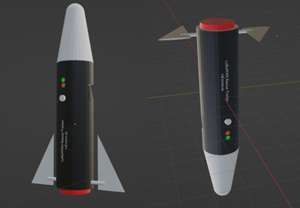Organization of backup communication channels for emergencies in environments with limited infrastructure using LPWAN technology
DOI:
https://doi.org/10.3103/S0735272723090054Keywords:
LoRaWAN, communications, autonomy time, Okamura-Hata model, two-ray model, limitationsAbstract
This paper elucidates the importance of creating backup communication channels in emergencies when access to cellular and satellite communication systems can be limited. The purpose of the study is to substantiate the use of LoRaWAN technology as a basis for building reliable backup communication facilities. A block diagram of the device has been proposed, which is used as an example for modeling the autonomy time of the device. It is shown that, depending on the mode of operation, this time ranges from 150 to 900 days. To estimate the radio accessibility zone of the device, the maximum transmission range was modeled using various models of radio wave propagation. The results of the investigations have shown that the developed emergency communication system based on the LoRaWAN protocol is effective and superior to other wireless communication technologies under certain conditions.
References
- N. Hashim, F. Idris, T. N. A. Tuan Ab Aziz, S. H. Johari, R. Mohd Nor, N. Ab Wahab, “Location tracking using LoRa,” Int. J. Electr. Comput. Eng., vol. 11, no. 4, p. 3123, 2021, doi: https://doi.org/10.11591/ijece.v11i4.pp3123-3128.
- E. T. de Camargo, F. A. Spanhol, Á. R. Castro e Souza, “Deployment of a LoRaWAN network and evaluation of tracking devices in the context of smart cities,” J. Internet Serv. Appl., vol. 12, no. 1, p. 8, 2021, doi: https://doi.org/10.1186/s13174-021-00138-7.
- LoRa Alliance, “LoRaWANTM 1.1 Specification,” 2017. uri: https://lora-alliance.org/wp-content/uploads/2020/11/lorawantm_specification_-v1.1.pdf.
- “NEO-6 u-blox 6 GPS Modules, Data Sheet.” https://www.digikey.com/htmldatasheets/production/2757457/0/0/1/neo-6.html.
- STMicroelectronics, “MEMS digital output motion sensor: ultra-low-power high-performance 3-axis ‘femto’ accelerometer. Datasheet LIS2DH12,” Web-site STMicroelectronics. https://www.st.com/en/mems-and-sensors/lis2dh12.html.
- Y. V. Lykov, D. Y. Gorelov, A. A. Lykova, S. O. Savenko, “Energy efficiency research of LPWAN technologies,” Radio Electron. Comput. Sci. Control, no. 3, p. 27, 2023, doi: https://doi.org/10.15588/1607-3274-2023-3-3.
- S. O. Kravchuk, L. J. Afanaseva, D. A. Minochkin, I. M. Kravchuk, Radio Wave Propagation in Coverage Area of Wireless Communication Networks. Kyiv: Igor Sikorsky Kyiv Polytechnic Institute, 2020.
- Semtech, “Datasheet SX1276/77/78/79,” 2020. uri: https://semtech.my.salesforce.com/sfc/p/#E0000000JelG/a/2R0000001Rbr/6EfVZUorrpoKFfvaF_Fkpgp5kzjiNyiAbqcpqh9qSjE.
- E. Zochmann, K. Guan, M. Rupp, “Two-ray models in mmWave communications,” in 2017 IEEE 18th International Workshop on Signal Processing Advances in Wireless Communications (SPAWC), 2017, pp. 1–5, doi: https://doi.org/10.1109/SPAWC.2017.8227681.
- F. M. Bacco, E. Ferro, A. Gotta, “Radio propagation models for UAVs: what is missing?,” in Proceedings of the 11th International Conference on Mobile and Ubiquitous Systems: Computing, Networking and Services, 2014, doi: https://doi.org/10.4108/icst.mobiquitous.2014.257896.
- A. O. Akande, F. A. Semire, Z. K. Adeyemo, C. K. Agubor, “Optimization of modified empirical model in 2.3 GHz long term evolution network. Case study of FUTO,” Radioelectron. Commun. Syst., vol. 65, no. 1, pp. 27–47, 2022, doi: https://doi.org/10.3103/S0735272722010046.


